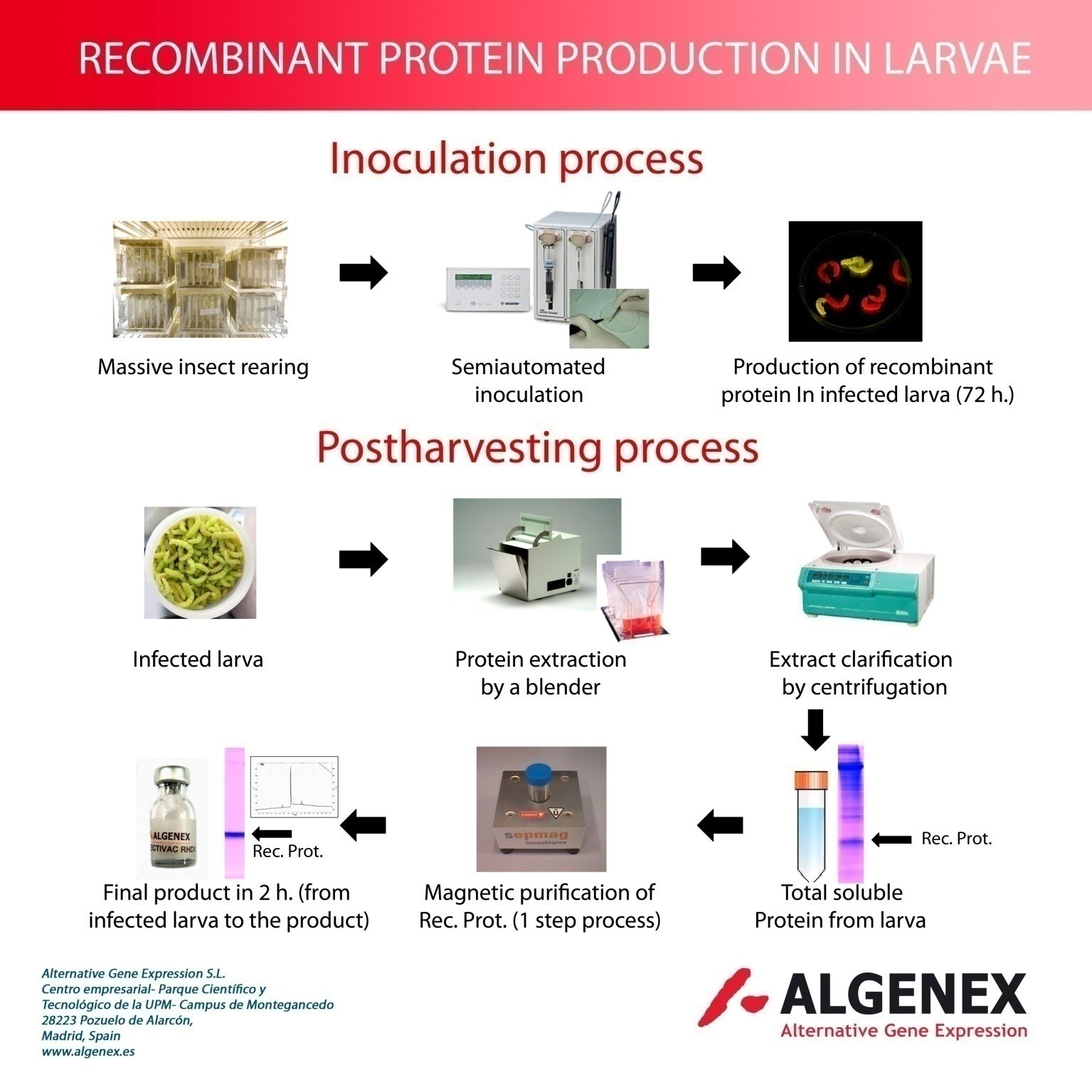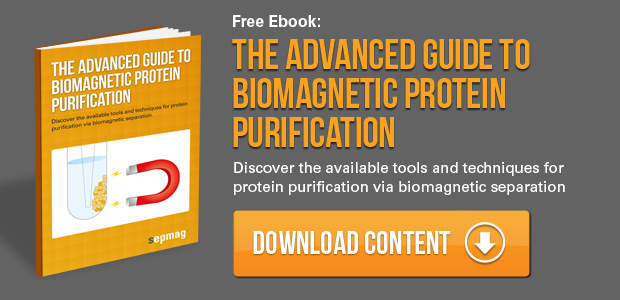The business value of potentially large production capacities coupled to lower capital expenditures (CapEx) requirements and manufacturing costs may reduce the gap between production volumes and patient needs for potentially life-saving drugs. This is the reason because pharmaceutical companies are continuously seeking for new technologies. An economically efficient alternative to bioreactor-based technologies is the use of living biofactories such as transgenic animals, plants or insects.

Numerous studies using insect larvae platforms have demonstrated the cost-efficiency and the scalability of production of many recombinant proteins, which include diagnostic reagents, vaccines and therapeutic molecules, among others. One of the most used technologies based on insects, combines the use of Autographa californica multiple nucleopolyhedrovirus (AcMNPV) vectors with its natural host, the lepidoptera Trichoplusia ni (T. ni). Insect hosts and other type of host organisms are fully explained in our protein purification handbook.
The company Alternative Gene Expression S.L. (ALGENEX) has optimized the industrial production in T. ni larvae by a proprietary technology denominated IBES® (Improved Baculovirus Expression System). IBES® represents one of the best production alternatives based on baculovirus vectors. Baculovirus-infected larvae produce high yields of recombinant protein (frequently more than one milligram per insect) at a reduced cost and working in nonsterile conditions. IBES® technology provides a final product with high biosafety standards as animal compounds are not involved in the production process and neither does cross-infection in mammals occur between pathogens infecting this lepidopter, reducing drastically the serious concern over animal by-product contamination of the final product.
However, part of the costs associated to biologics production is related to the purification processes. Larvae extracts are more complex than those obtained from cell cultures and require of additional steps of clarification before conventional affinity purification processes.
Recently, our company has tested the use of magnetic beads in a single-step purification process for a nanobody (single domain llama antibody). This nanobody is directed to a conserved epitope of protein VP6 from human Rotavirus A, which is able to recognize most of the viruses belonging to this virus group and can be used both for a universal Rotavirus A diagnostic test and for neutralization of the virus in the intestinal tract (therapeutic molecule). Complex extracts derived from baculovirus-infected T. ni insect larvae expressing the his-tagged nanobody, named 3B2, were mixed with magnetic beads (Dynabeads; Invitrogen), to capture the his-tagged protein.
Schematic representation of the purification process of nanobody 3B2 produced in insect larvae (IBES® technology) by magnetic beads and a biomagnetic separator
The figure shows a schematic representation of the purification process followed. We used a biomagnetic separation system provided by SEPMAG® on extract volumes of about 10 ml. Interestingly, in a single-step purification process, we were able to reach up to 90% purification of nanobody 3B2, in a quantity sufficient to coat ELISA plates for virus capture purposes. This purification procedure was cost-efficient for the mg scale needed in a diagnostic test production, recovering most of the recombinant protein present in the extracts. In fact, purification yields were higher than those obtained by other conventional chromatographic purification technologies. Most importantly, the content of DNA, particles or lipids in the samples (crude extracts) did not affect the efficiency of magnetic bead-mediated purification.
Next, we will use the biomagnetic separation technology for large-scale purifications needed for in vivo protection experiments with the nanobody (scale of g of purified recombinant protein). The objective will be scaling up sample volumes in order to test the efficiency of bigger biomagnetic separator sizes for the nanobody purification. Additionally, we have tested this purification system with a number of different recombinant proteins obtained by the same methodology. In general, tagged proteins attached very efficiently to the magnetic beads, but high molecular weight proteins presented problems of detachment from the beads, once isolated by biomagnetic separators. We do not know if these problems were due to the protein themselves, the beads used, the complexity of the extracts or the buffers employed.
Future work will focus in improving the purification processes based on magnetic beads and to evaluate the cost-efficiency of this technology for large-scale purifications of biologics derived from insect larvae extracts. Probably, it should be optimized for each individual protein.
You will find this post and many more interesting articles about using biomagnetic separation for protein purification in our Advanced Guide to Biomagnetic Protein Purification:
Related articles:
- Multi-functional Nanoparticles for Protein Purification
- Advanced Biomagnetic Separation Systems to Enable Protein Immunomagnetic Purification
- Magnetic bead-enabled one-step lysis and recombinant protein purification
Author: José M. Escribano DVM, PhD
 Researcher at the Biotechnology Department, INIA. Spain
Researcher at the Biotechnology Department, INIA. Spain
Co-founder of Alternative Gene Expression S.L. (ALGENEX)
jmescribano@algenex.com




